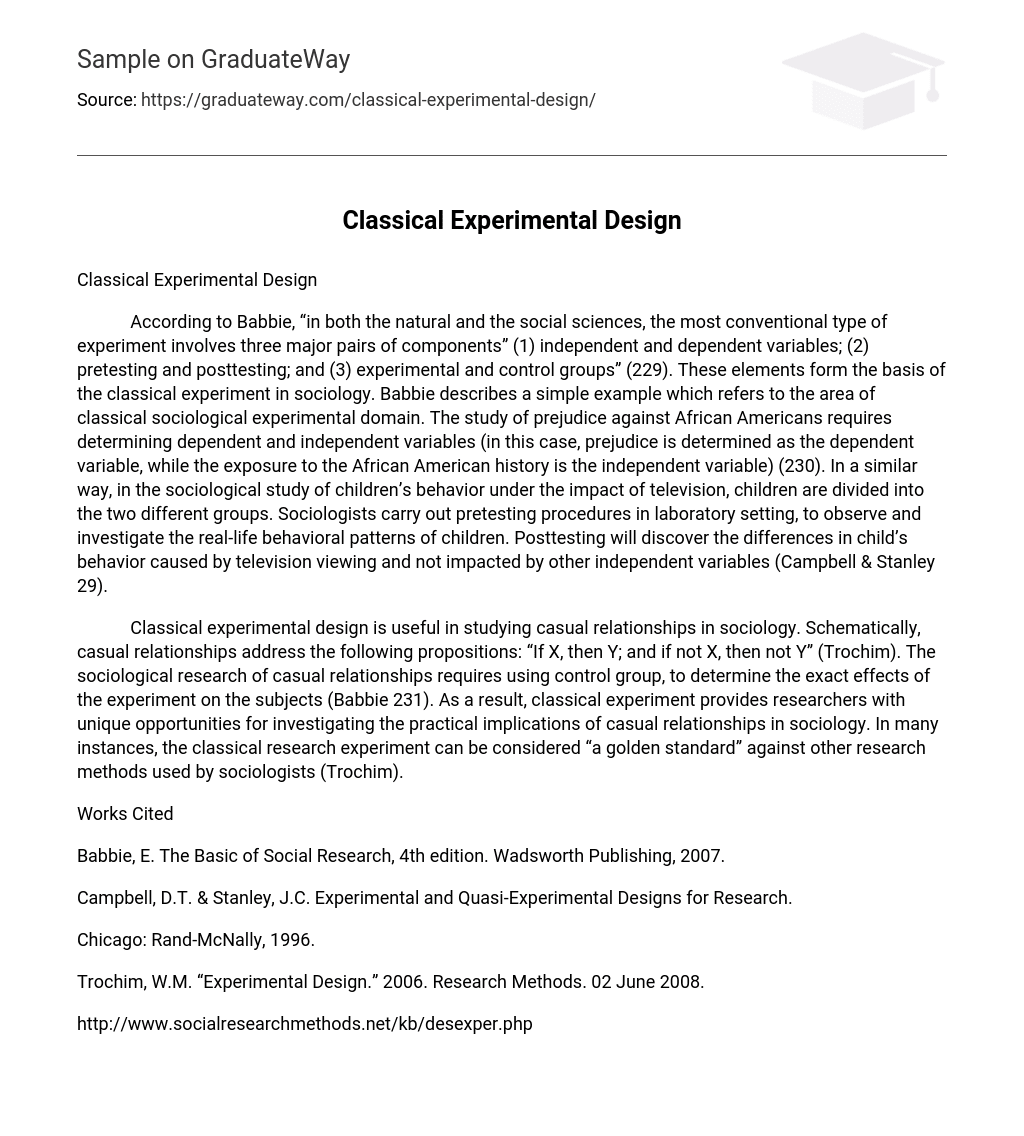According to Babbie, “in both the natural and the social sciences, the most conventional type of experiment involves three major pairs of components”
- independent and dependent variables;
- pretesting and posttesting;
- experimental and control groups” (229).
These elements form the basis of the classical experiment in sociology. Babbie describes a simple example which refers to the area of classical sociological experimental domain. The study of prejudice against African Americans requires determining dependent and independent variables (in this case, prejudice is determined as the dependent variable, while the exposure to the African American history is the independent variable) (230).
In a similar way, in the sociological study of children’s behavior under the impact of television, children are divided into the two different groups. Sociologists carry out pretesting procedures in laboratory setting, to observe and investigate the real-life behavioral patterns of children. Posttesting will discover the differences in child’s behavior caused by television viewing and not impacted by other independent variables (Campbell & Stanley 29).
Classical experimental design is useful in studying casual relationships in sociology. Schematically, casual relationships address the following propositions: “If X, then Y; and if not X, then not Y” (Trochim). The sociological research of casual relationships requires using control group, to determine the exact effects of the experiment on the subjects (Babbie 231).
As a result, classical experiment provides researchers with unique opportunities for investigating the practical implications of casual relationships in sociology. In many instances, the classical research experiment can be considered “a golden standard” against other research methods used by sociologists (Trochim).
Works Cited
- Babbie, E. The Basic of Social Research, 4th edition. Wadsworth Publishing, 2007.
- Campbell, D.T. & Stanley, J.C. Experimental and Quasi-Experimental Designs for Research. Chicago: Rand-McNally, 1996.
- Trochim, W.M. “Experimental Design.” 2006. Research Methods. 02 June 2008. http://www.socialresearchmethods.net/kb/desexper.php





